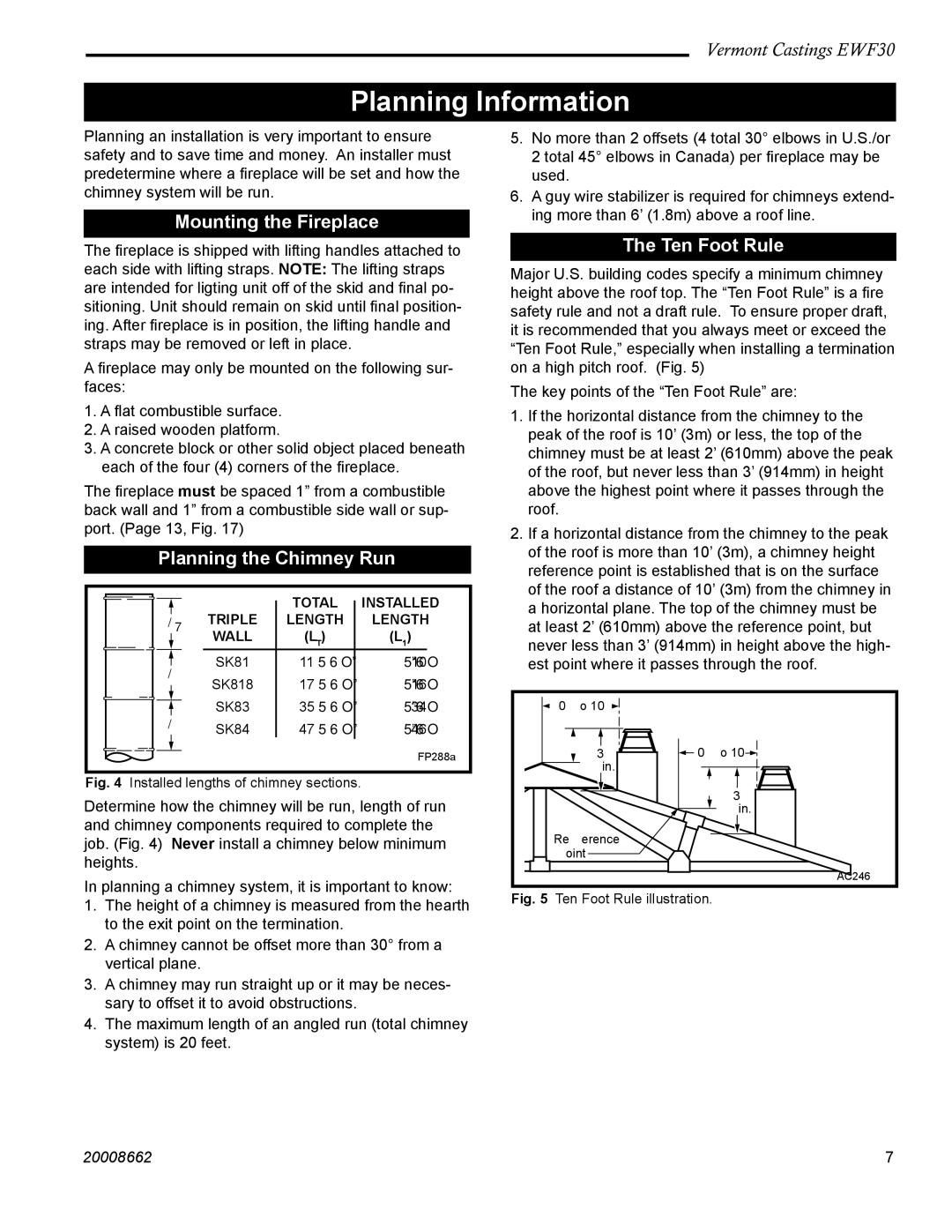EWF30 specifications
The Vermont Casting EWF30 is a testament to innovation and craftsmanship in the world of cast iron wood stoves. This highly efficient wood-burning stove combines traditional aesthetics with modern technology, making it a perfect centerpiece for both rustic and contemporary homes. One of the standout features of the EWF30 is its impressive heating capacity. Designed to heat areas up to 2,000 square feet, it is ideal for large spaces, providing consistent warmth during chilly months.Constructed from high-quality cast iron, the EWF30 offers a durability that only improves with age. This material is known for its excellent heat retention and distribution, resulting in a steady, comfortable warmth. The stove’s classic design includes large ceramic glass windows, allowing users to enjoy the mesmerizing beauty of the fire while safely keeping the warmth inside.
Incorporating advanced technology, the Vermont Casting EWF30 features a clean burning system that significantly reduces emissions. This is a critical aspect for environmentally conscious consumers, as the stove adheres to strict EPA standards, promoting cleaner air and reduced environmental impact. The efficiency of this wood stove is exceptional, with a thermal efficiency rating that maximizes heat output while minimizing fuel usage.
The EWF30 is equipped with a user-friendly air control system, allowing for easy adjustments to the airflow. This system enhances the combustion process, enabling users to achieve the desired flame and heat levels effortlessly. The top-loading design also simplifies the refueling process, making it easier to add wood without disturbing the existing fire.
Aesthetically, the Vermont Casting EWF30 can be customized with various finishes, including traditional black, enamel, and even bold colors, ensuring it fits seamlessly with any interior decor. Additionally, this model includes a removable ash pan, providing a convenient cleaning option.
In summary, the Vermont Casting EWF30 is more than just a wood stove; it is a fusion of tradition and technology. Its heating efficiency, durability, and aesthetic appeal make it a worthy investment for anyone seeking a reliable and stylish heating solution for their home. Whether for ambiance or functionality, the EWF30 is designed to enhance the living experience while respecting the environment.

